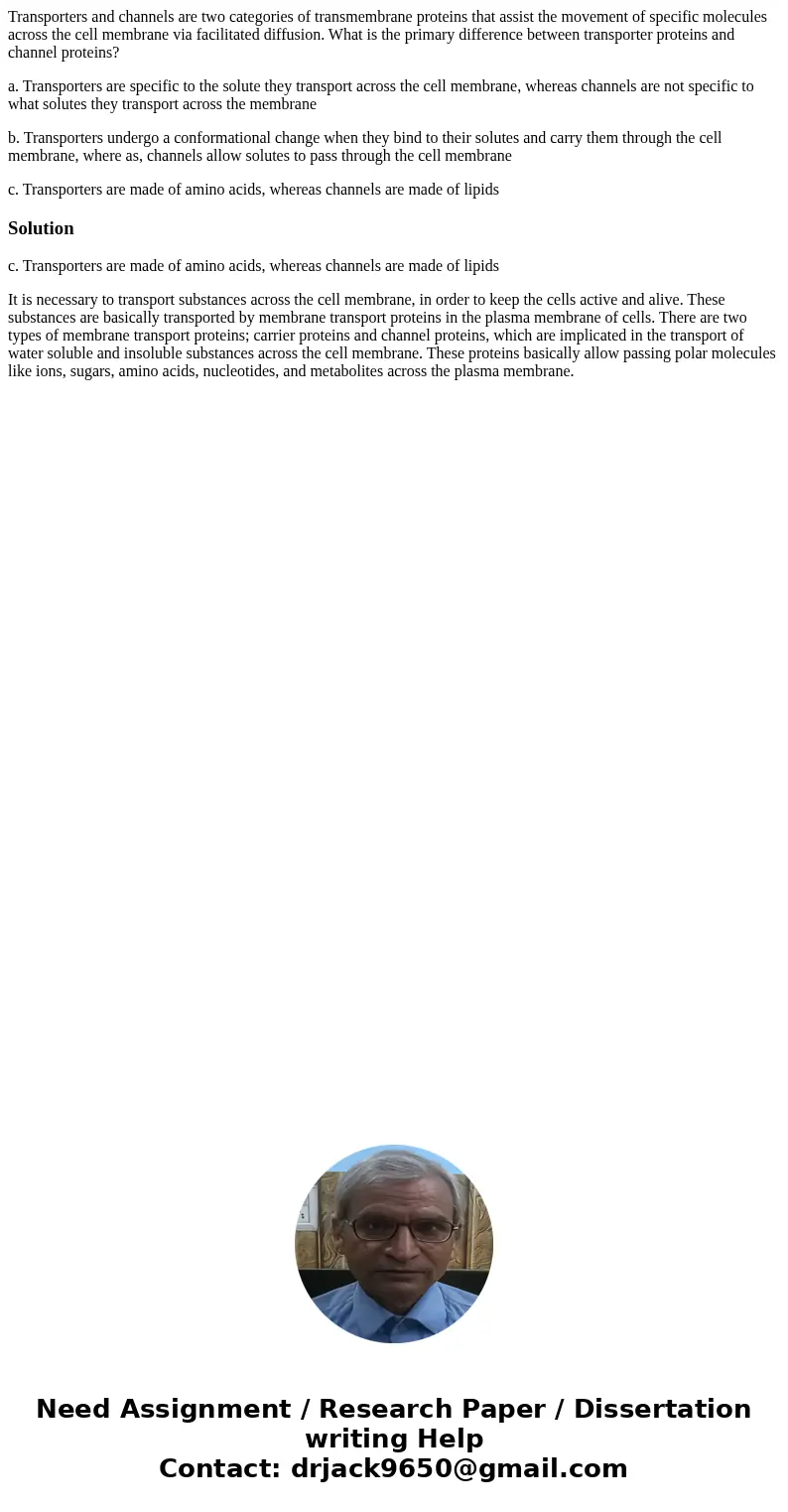Transporters and channels are two categories of transmembran
Transporters and channels are two categories of transmembrane proteins that assist the movement of specific molecules across the cell membrane via facilitated diffusion. What is the primary difference between transporter proteins and channel proteins?
a. Transporters are specific to the solute they transport across the cell membrane, whereas channels are not specific to what solutes they transport across the membrane
b. Transporters undergo a conformational change when they bind to their solutes and carry them through the cell membrane, where as, channels allow solutes to pass through the cell membrane
c. Transporters are made of amino acids, whereas channels are made of lipids
Solution
c. Transporters are made of amino acids, whereas channels are made of lipids
It is necessary to transport substances across the cell membrane, in order to keep the cells active and alive. These substances are basically transported by membrane transport proteins in the plasma membrane of cells. There are two types of membrane transport proteins; carrier proteins and channel proteins, which are implicated in the transport of water soluble and insoluble substances across the cell membrane. These proteins basically allow passing polar molecules like ions, sugars, amino acids, nucleotides, and metabolites across the plasma membrane.

 Homework Sourse
Homework Sourse